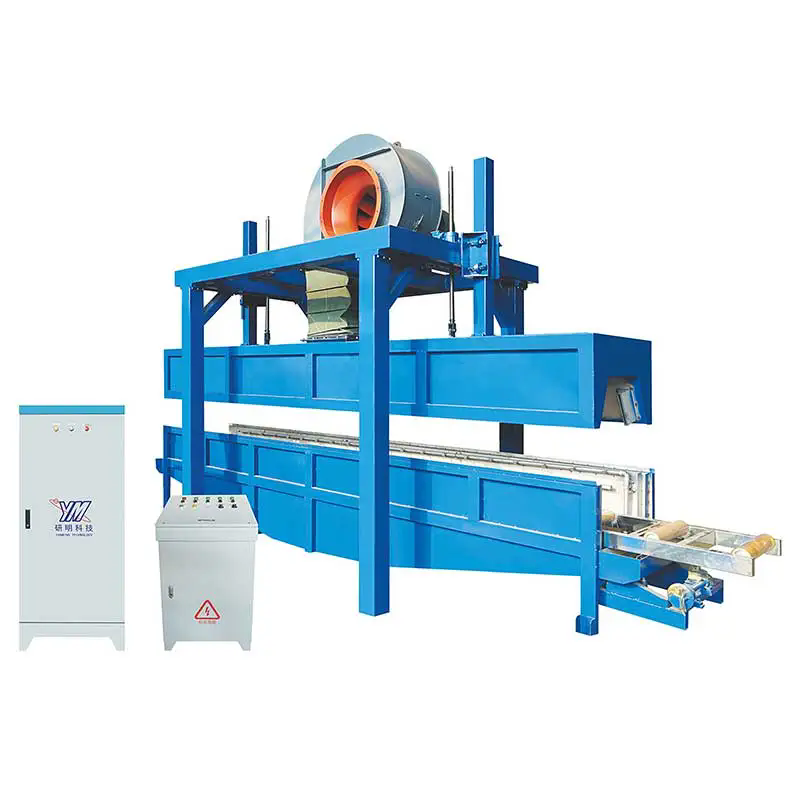Exploring the On-Line Quenching System: Enhancing Efficiency in Heat Treatment
2024-09-12
In the realm of industrial manufacturing and metalworking, the heat treatment of materials is a critical process for achieving the desired mechanical properties and performance characteristics. One of the advanced technologies revolutionizing this field is the On-Line Quenching System. This blog will delve into what an On-Line Quenching System is, its benefits, and its impact on modern manufacturing processes.
What is an On-Line Quenching System?
An On-Line Quenching System is an integrated solution used in the heat treatment process to rapidly cool or "quench" metal parts immediately after they have been heated to high temperatures. The system is designed to work continuously within the production line, providing real-time quenching as part of the automated manufacturing process.
How Does an On-Line Quenching System Work?
1. Heat Treatment Integration: In a typical production setup, metal parts are heated to high temperatures in a furnace or heating chamber. Once the parts reach the desired temperature, they are transferred directly to the On-Line Quenching System.
2. Quenching Process: The On-Line Quenching System uses various quenching mediums, such as water, oil, or polymer solutions, to rapidly cool the heated metal parts. The cooling process is carefully controlled to ensure that the metal achieves the desired hardness and strength.
3. Automated Handling: The system is equipped with automated mechanisms to handle and transport the parts through the quenching process. This automation minimizes manual intervention and ensures consistent and precise quenching.
4. Temperature Control: Advanced On-Line Quenching Systems feature precise temperature control and monitoring to optimize the cooling rates and ensure uniform treatment across all parts. Sensors and feedback mechanisms continuously adjust the quenching parameters based on real-time data.
5. Post-Quenching Treatment: After quenching, the metal parts may undergo additional processes, such as tempering or annealing, to further refine their properties. The On-Line Quenching System integrates seamlessly with these subsequent processes to maintain efficiency and consistency.
Benefits of On-Line Quenching Systems
1. Increased Efficiency: On-Line Quenching Systems streamline the heat treatment process by integrating quenching directly into the production line. This continuous operation reduces downtime and improves overall manufacturing efficiency.
2. Enhanced Consistency: The automated and controlled nature of On-Line Quenching Systems ensures uniform quenching across all parts. This consistency results in reliable mechanical properties and reduces variability in the final product.
3. Improved Quality: By achieving precise quenching temperatures and cooling rates, the On-Line Quenching System helps to enhance the quality of the treated metal parts. This leads to improved hardness, strength, and durability.
4. Reduced Labor Costs: Automation in the On-Line Quenching System reduces the need for manual handling and intervention. This not only lowers labor costs but also minimizes the risk of human error and improves workplace safety.
5. Energy Efficiency: Many On-Line Quenching Systems are designed with energy efficiency in mind. They often feature optimized cooling systems and energy recovery mechanisms to reduce overall energy consumption and operational costs.
6. Real-Time Monitoring: Advanced systems provide real-time monitoring and data analysis, allowing operators to track and adjust parameters as needed. This capability enhances process control and helps in maintaining optimal quenching conditions.
Applications of On-Line Quenching Systems
1. Automotive Industry: In automotive manufacturing, On-Line Quenching Systems are used for heat treating components such as gears, shafts, and suspension parts. The system ensures that these parts meet the required performance and safety standards.
2. Aerospace Industry: Aerospace components, which require precise mechanical properties and high strength, benefit from the consistent and controlled quenching provided by On-Line Quenching Systems.
3. Tool and Die Industry: Tooling and die components, which undergo significant wear and stress, are treated using On-Line Quenching Systems to achieve the desired hardness and wear resistance.
4. Heavy Machinery: In the production of heavy machinery and industrial equipment, On-Line Quenching Systems ensure that components like gears, axles, and bearings have the necessary toughness and reliability.
Key Considerations When Implementing an On-Line Quenching System
1. Compatibility: Ensure that the On-Line Quenching System is compatible with your existing production line and heat treatment processes. Integration should be seamless to avoid disruptions.
2. System Capacity: Choose a system with the appropriate capacity to handle the volume of parts being produced. Consider factors such as part size, weight, and production speed.
3. Maintenance: Regular maintenance and calibration of the On-Line Quenching System are essential for maintaining optimal performance and longevity. Implement a maintenance schedule to address any issues promptly.
4. Training and Support: Ensure that your team is trained to operate and troubleshoot the system effectively. Consider ongoing support from the manufacturer or service provider to address any technical challenges.
Conclusion
The On-Line Quenching System represents a significant advancement in heat treatment technology, offering enhanced efficiency, consistency, and quality in metal processing. By integrating quenching directly into the production line, manufacturers can achieve precise and reliable results while optimizing their operations. As industries continue to seek improvements in manufacturing processes, On-Line Quenching Systems stand out as a key solution for achieving high-performance metal components and driving overall production excellence.



